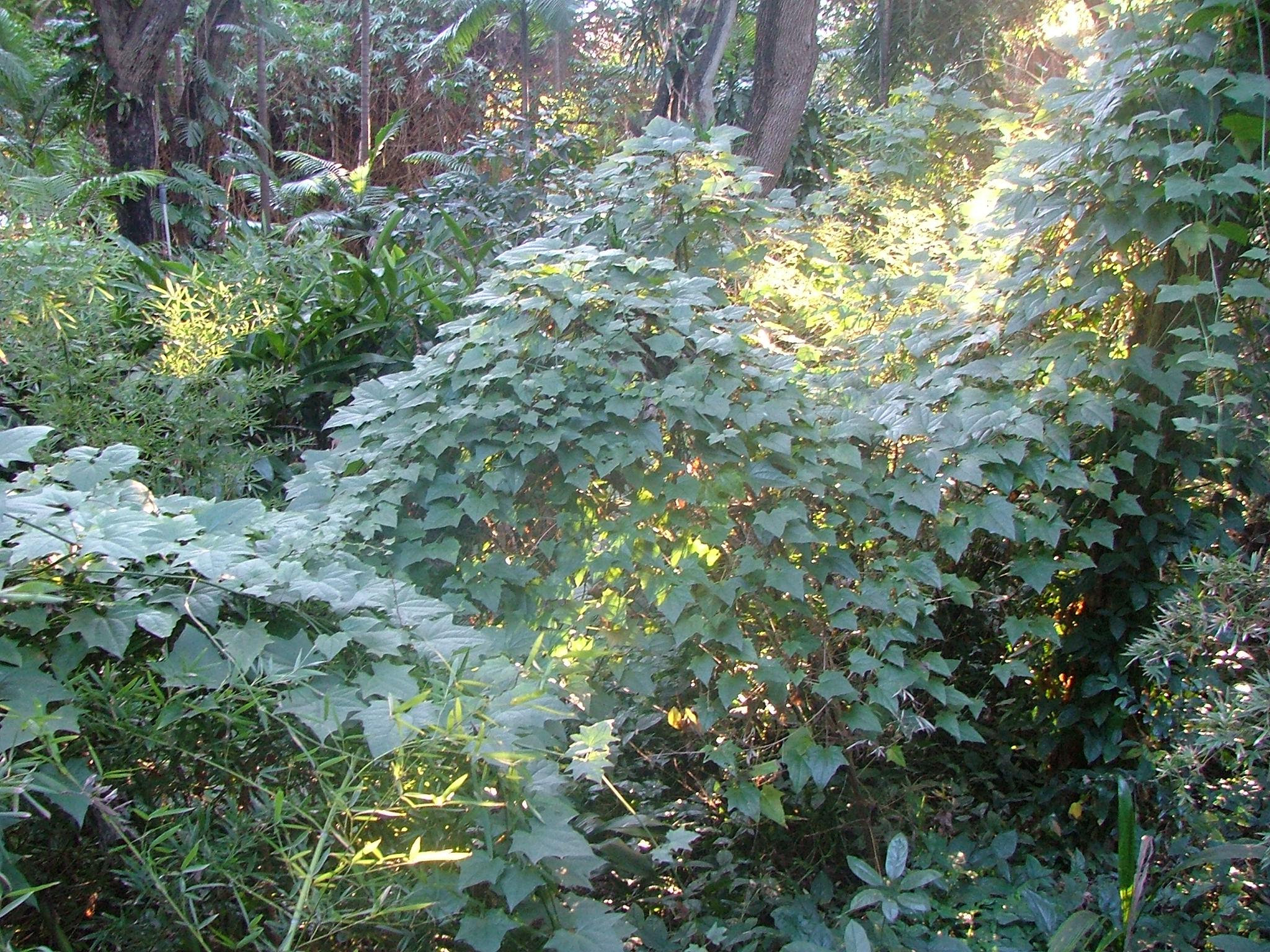Thunbergia
Weed Habitat
- Natives of India, these vines were introduced to the region as ornamentals. They invade lowland rainforest and river systems, and smother, strangle, and kill native plants. Often their weight pulls down mature trees. These also infest cleared land.
- Most reproduction in North Queensland is vegetative. Thunbergias grow readily from their tuberous root and spread over long distances when flooding transports tuber fragments.
Description
- Perennial vines twining to 15 m with numerous tuberous roots and large lignotubers.
- Branches are 4-angled, often grooved longitudinally.
- Leaves green, opposite, triangular with scalloped or lobed edges and narrowing to a pointed tip, 15 cm long, 10 cm wide.
- Large, trumpet-shaped flowers, white on he outside, yellowish inside, expanding to five rounded pale lavender-blue petals, one larger than the others, 8 cm long and 6-8 cm across.
- Seedpod is inconspicuous, cone-shaped, 3-5 cm long.
- Seed flat, 1 cm long, covered with brown scales.





Plant Type
Leaf Arrangement
Other weed identifiers
Plant Life Cycle
Weed Declaration
This species is declared Restricted Matter under the Biosecurity Act 2014 for further information on declaration refer to your Local Government or the Department of Agriculture and Fisheries

